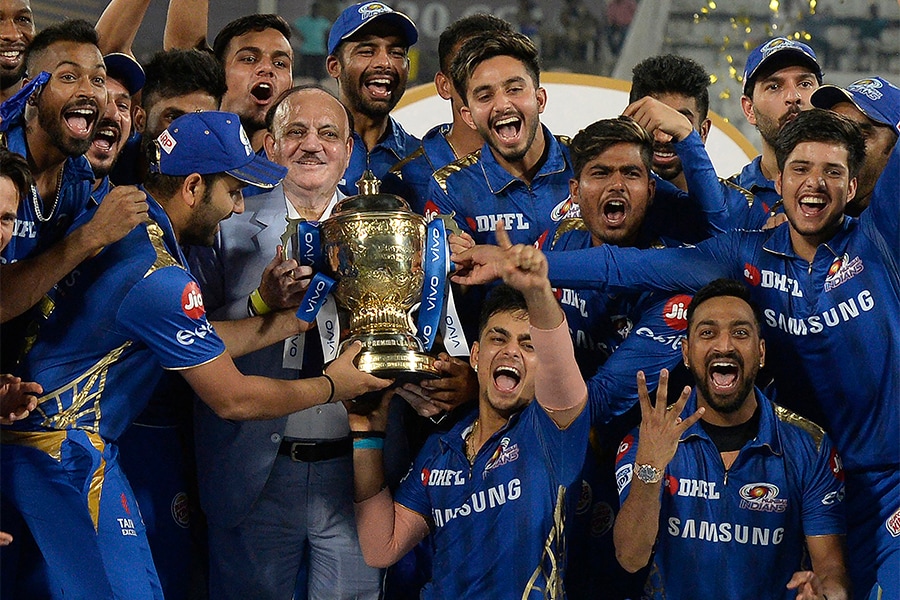
All that glitters: How the money-spinning IPL turned cricket into gold
The world's most valuable cricket tournament, now in its 15th iteration, was a pioneer in Twenty20 league cricket. Its success and popularity has spawned copycat competitions in other countries and generated a fortune for the Board of Control for Cricket in India (BCCI)
 Team Mumbai Indians with the trophy of the Indian Premier League (IPL). (Credits: NOAH SEELAM/ AFP)
Team Mumbai Indians with the trophy of the Indian Premier League (IPL). (Credits: NOAH SEELAM/ AFP)
New Delhi, India: The Indian Premier League has made millionaires out of young players, generated invaluable publicity for team owners and made the national cricket board one of the richest governing bodies in global sport.
The world's most valuable cricket tournament, now in its 15th iteration and boasting the likes of Virat Kohli, Pat Cummins and Jos Buttler, was a pioneer in Twenty20 league cricket.
Its success and popularity has spawned copycat competitions in other countries and generated a fortune for the Board of Control for Cricket in India (BCCI).
The high-octane, big-hitting carnival provides a must-see product, driving broadcast subscriptions by the millions and pulling in huge advertising revenue.
Some businesses are willing to splash out nearly $1 billion just to get a chance to field a team on the IPL's golden wicket.







